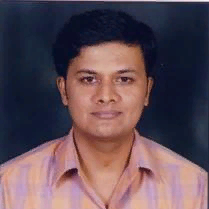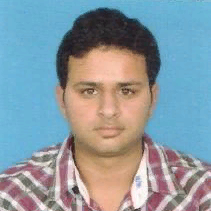International Journal of Image, Graphics and Signal Processing (IJIGSP)
IJIGSP Vol. 5, No. 8, 28 Jun. 2013
Cover page and Table of Contents: PDF (size: 757KB)
Aerial Video Processing for Land Use and Land Cover Mapping
Full Text (PDF, 757KB), PP.45-54
Views: 0 Downloads: 0
Author(s)
Index Terms
Radial Distortion, Image Stitching, Image segmentation, Identify land features
Abstract
In this paper, we have proposed an Automatic Aerial Video Processing System for analyzing land surface features. Analysis of aerial video is done in three steps a) Image pre-processing b) Image registration and c) Image segmentation. Using the proposed system, we have identified Land features like Vegetation, Man-Made Structures and Barren Land. These features are identified and differentiated from each other to calculate their respective areas. Most important feature of this system is that it is an instantaneous video acquisition and processing system. In the first step, radial distortions of image are corrected using Fish-Eye correction algorithm. In the second step, the image features are matched and then images are stitched using Scale Invariant Feature Transform (SIFT) followed by Random Sample Consensus (RANSAC) algorithm. In the third step, the stitched images are segmented using Mean Shift Segmentation and different structures are identified using RGB model. Here we have used a hybrid system to identify Man-Made Structures using Fuzzy Edge Extraction along with Mean Shift segmentation. The results obtained are compared with the ground truth data, thus evaluating the performance of the system. The proposed system is implemented using Intel's OpenCV.
Cite This Paper
Ashoka Vanjare,S.N. Omkar,Akhilesh Koul,Devesh,"Aerial Video Processing for Land Use and Land Cover Mapping", IJIGSP, vol.5, no.8, pp.45-54, 2013. DOI: 10.5815/ijigsp.2013.08.06
Reference
[1]Zongjian L. UAV for mapping—low altitude photogrammetric survey.International Archives of Photogrammetry and Remote Sensing, Beijing, China, 2008.
[2]Grenzdörffer G. J., Engel A., Teichert B. The photogrammetric potential of low-cost UAVs in forestry and agriculture. The International Archives of the Photogrammetry, Remote Sensing and Spatial Information Sciences, 2008, 31(B3) , 1207-1214.
[3]Laliberte A. S., Rango, A. Texture and scale in object-based analysis of subdecimeter resolution unmanned aerial vehicle (UAV) imagery.Geoscience and Remote Sensing, IEEE Transactions on, 2009, 47(3), 761-770.
[4]Herwitz, S. R., Johnson, L. F., Dunagan, S. E., Higgins R. G., Sullivan D. V., Zheng J., Brass J. A. Imaging from an unmanned aerial vehicle: agricultural surveillance and decision support. Computers and Electronics in Agriculture, 2004, 44(1), 49-61.
[5]Elfes A., Siqueira Bueno S., Bergerman M., Ramos Jr J. G. A semi-autonomous robotic airship for environmental monitoring missions. In Robotics and Automation, 1998. Proceedings. 1998 IEEE International Conference on Vol. 4, 3449-3455.
[6]Koo V. C., Chan Y. K., Vetharatnam G., Chua M. Y., Lim C. H., Lim C. S., Sew B. C. A new unmanned aerial vehicle synthetic aperture radar for environmental monitoring. Progress In Electromagnetics Research, , 2012, 122, 245-268.
[7]Srinivasan S., Latchman H., Shea J., Wong T., McNair J. Airborne traffic surveillance systems: video surveillance of highway traffic. In Proceedings of the ACM 2nd international workshop on Video surveillance & sensor networks, ACM, 2004, October, 131-135.
[8]Lipowezky U. Grayscale aerial and space image colorization using texture classification. Pattern recognition letters, 2006, 27(4), 275-286.
[9]Solka J. L., Marchette D. J., Wallet B. C., Irwin V. L., Rogers, G. W. Identification of man-made regions in unmanned aerial vehicle imagery and videos. Pattern Analysis and Machine Intelligence, IEEE Transactions on, 1998, 20(8), 852-857.
[10]Huertas A., & Nevatla R. . Detecting changes in aerial views of man-made structures. IEEE, In Computer Vision, Sixth International Conference on 1998, January, 73-80.
[11]Maloof M. A., Langley P., Binford T. O., Nevatia R., Sage S. Improved rooftop detection in aerial images with machine learning. Machine Learning, 2003, 53(1-2), 157-191.
[12]Treash K., Amaratunga, K. Automatic road detection in grayscale aerial images. Journal of computing in civil engineering, 2000, 14(1), 60-69.
[13]Tournaire O., Paparoditis N. A geometric stochastic approach based on marked point processes for road mark detection from high resolution aerial images. ISPRS Journal of Photogrammetry and Remote Sensing, 2009, 64(6), 621-631.
[14]Suzuki A., Shio A., Arai H., Ohtsuka S. . Dynamic shadow compensation of aerial images based on color and spatial analysis. IEEE, In Pattern Recognition, 2000, Proceedings. 15th International Conference on Vol. 1, 317-320.
[15]Deng Y., Manjunath B. S., Shin, H. Color image segmentation. IEEE, In Computer Vision and Pattern Recognition, 1999. Computer Society Conference on. Vol. 2.
[16]Peng J., Zhang D., Liu Y. An improved snake model for building detection from urban aerial images. Pattern Recognition Letters, 2005, 26(5), 587-595.
[17]Wei W., Xin, Y. Rapid, man-made object morphological segmentation for aerial images using a multi-scaled, geometric image analysis. Image and Vision Computing, 2010, 28(4), 626-633.
[18]Cameras R. V. White Paper A Flexible Architecture for Fisheye Correction in Automotive Rear-View Cameras.
[19]Lowe D. G. Distinctive image features from scale-invariant keypoints.International journal of computer vision, 2004, 60(2), 91-110.
[20]Koenderink J. J. The structure of images. Biological cybernetics, 1984, 50(5), 363-370.
[21]Lindeberg T. Scale-space theory: A basic tool for analyzing structures at different scales. Journal of applied statistics, 1994, 21(1-2), 225-270.
[22]Fischler M. A., Bolles R. C. Random sample consensus: a paradigm for model fitting with applications to image analysis and automated cartography. Communications of the ACM, 1981, 24(6), 381-395.
[23]Comaniciu D., Meer P. Mean shift analysis and applications. In Computer Vision, 1999. The Proceedings of the Seventh IEEE International Conference on Vol. 2, 1197-1203.
[24]Russo F., Ramponi G. Edge extraction by FIRE operators. In Fuzzy Systems, 1994. IEEE World Congress on Computational Intelligence., Proceedings of the Third IEEE Conference on 249-253.
[25]Luke R. H., Anderson D. T., Keller J. M., Coupland, S. Fuzzy Logic-Based Image Processing Using Graphics Processor Units. Proc. IFSA-EUSFLAT, 2009.



